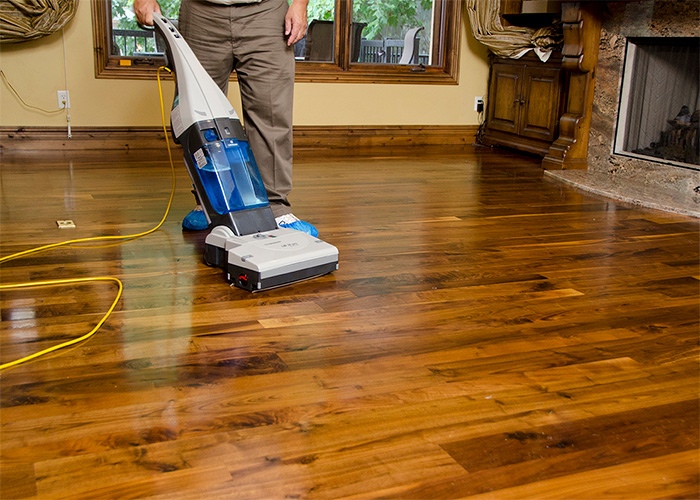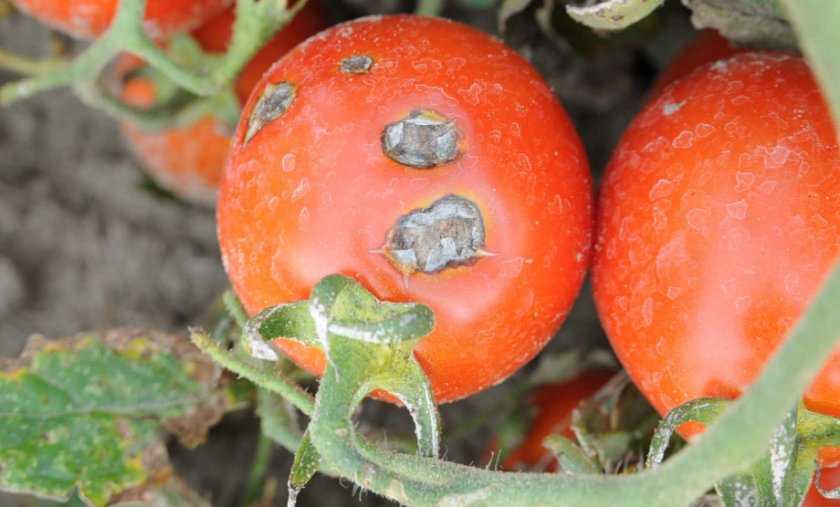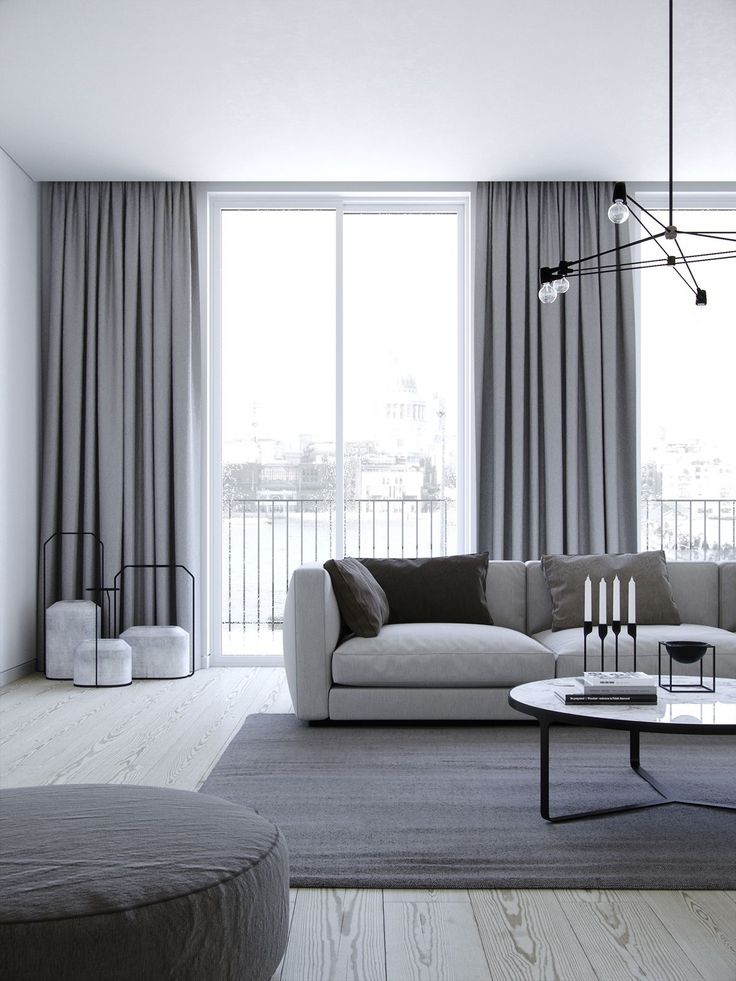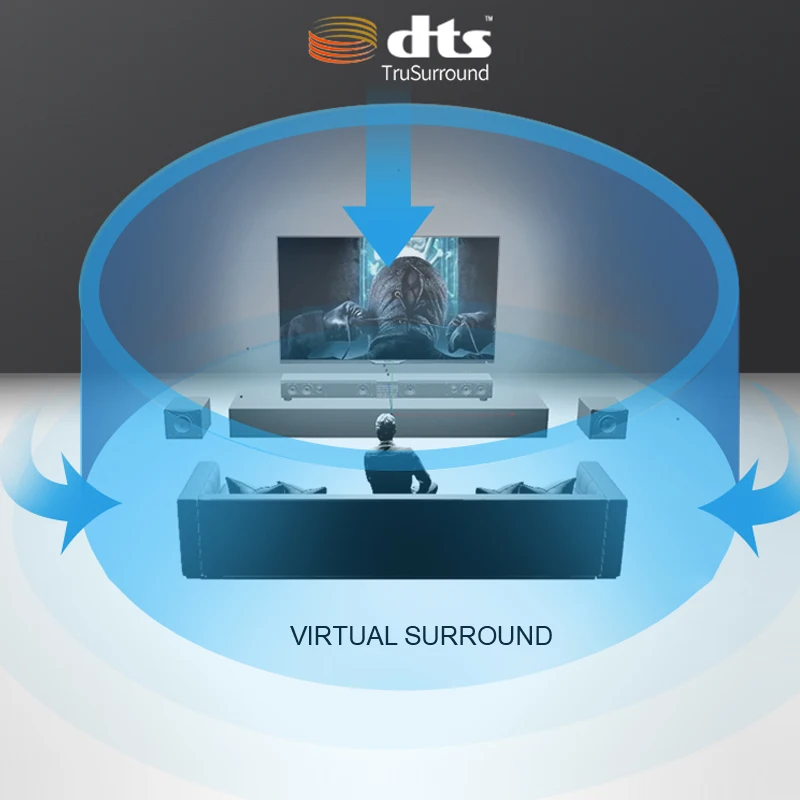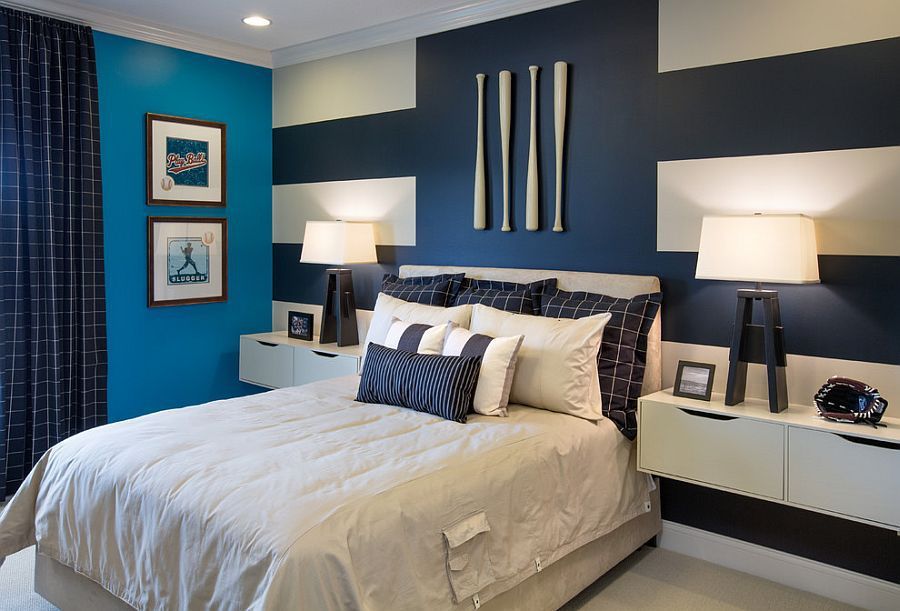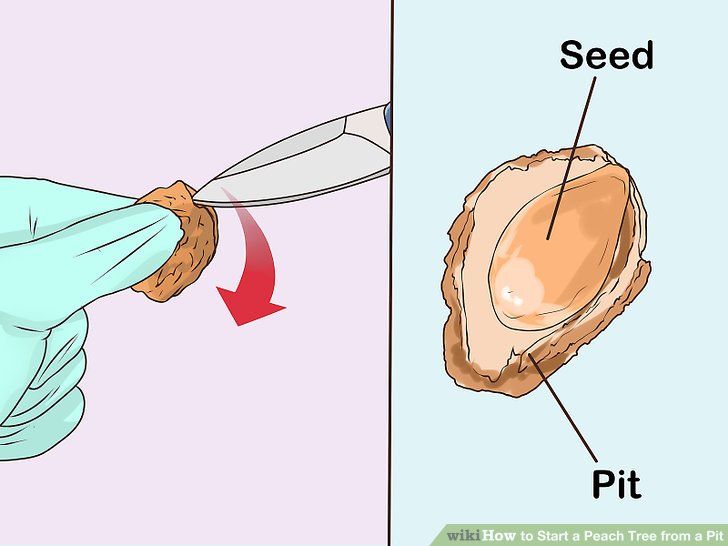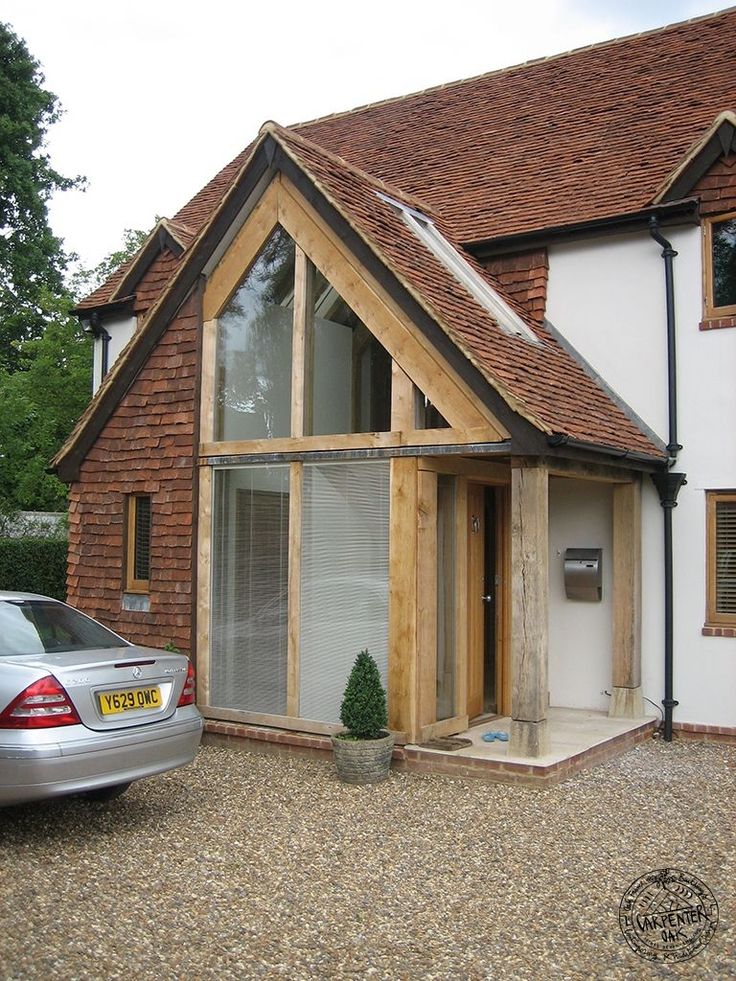Clean waxed wood floors
Aftercare For A Waxed Floor
Wax is our preferred option for use with antique or wooden floors with a bespoke patina. Waxing will give an unrivalled depth and beauty to the floor. A significant advantage of a Wax finish is that it can be maintained and restored relatively easily and does not require specialist tradesmen to carry out this work. The property owner or cleaner can carry out both daily and periodic maintenance.
A waxed floor will never require sanding and sealing. Over time the beauty of the floor will be enhanced by scratches, scuffs, dents etc. Some say a waxed floor requires more maintenance than either Polyurethane or Oil. This is true to some extent, initially, at least. However, in the long run, wax is favourable. Wax is a “little and often” approach to maintenance.
To compare, solid wood floors and engineered wood floors sealed with either Polyurethane or Oil require very infrequent maintenance/refurbishment. However, although an Oil or Polyurethane floor seal requires less regular maintenance or restoration, the restoration is a lot more involved when it becomes necessary. It will mean inconvenience and significant cost, as this work is skilled and beyond the average homeowners’ skill or experience.
A Waxed floor in a residential situation might require application and buffing (with a rotary buffing machine) two or even three times in its first year. This will be more frequent in a commercial setting. There is no definitive prediction on frequency, as this depends on the particulars of each project. This can be discussed with the owners/person responsible for making the best predictions.
Over time, the wax will harden, and wax applications will be required less often; buffing alone will be more common than waxing and buffing. Should the floor become dull and lose its lustre, you can apply another coat of wax and buff it. The floor will look better than when it was initially installed.
As an everyday regime, the homeowner or cleaner simply needs to sweep with a soft brush or vacuum. Never wet mop a waxed floor! If care is exercised, moist cloth and a PH-neutral cleaning solution can be used to clean a waxed floor.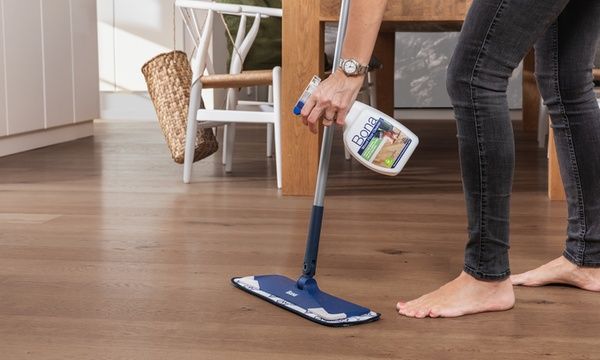 This doesn’t mean a wet mop. A moist cloth can be used, but a wet mop is terrible.
This doesn’t mean a wet mop. A moist cloth can be used, but a wet mop is terrible.
If a waxed floor is cleaned with a moist cloth, the floor needs to be dried and buffed off immediately (As you clean) with a dry towel.
By this, I mean buff dry with a towel as you go rather than cleaning the entire area with a moist cloth and then drying off. The cleaner needs to ensure that no spillages are left and to take care that the bottom of the bucket containing the warm water and cleaning solution is not placed directly onto the waxed floor (This is because it will inevitably be wet and could lead to rings/stains on the floor).
What also needs to be borne in mind is that cleaning in this way will remove the layers of wax over time. So if a regular wax application is not taking place also, the wax could eventually be entirely removed. There is a cleaning agent within Mylands wax so that when waxing and buffing a floor, it receives an excellent clean simultaneously.
Some practical tips for a waxed floor are as follows:
- Water/spillages, if wiped off the surface of a waxed floor relatively soon after taking place, will not cause an issue, but don’t allow water/spillages to sit on the surface for a prolonged period or the floor will mark.
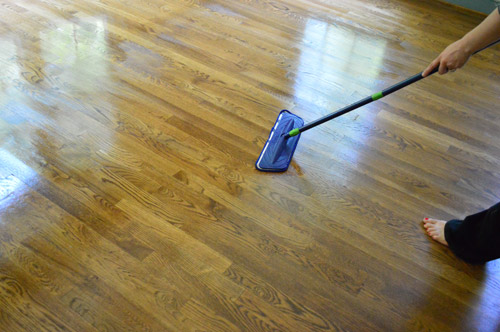
- Don’t use general household cleaners, which are aggressive and will strip the wax.
- Don’t allow the floor to go indefinitely without the application of wax.
- Place a good doormat at exterior entrances to ensure water is removed from shoes as you enter the property.
- Domestic spray polish can be used to clean a localised spillage…..wine, jam etc… Ensure it is a beeswax based rather than silicone. Be careful not to use this method on stairs as it can make them slippery
- Avoid wet-mopping floors with water and using household cleaners, as this can strip the wax coat off or damage the wood.
- To keep dust at bay before it dulls the finish, dry mop waxed floors as often as necessary with a microfiber cloth pad or vacuum-clean with a dust brush attachment.
- Ensure spills are cleaned up promptly with a water-dampened cloth, then wipe dry to prevent any permanent staining or damage.
- Place moisture-absorbing mats at the foot of exterior entrances to prevent dirt and moisture from being tracked in.
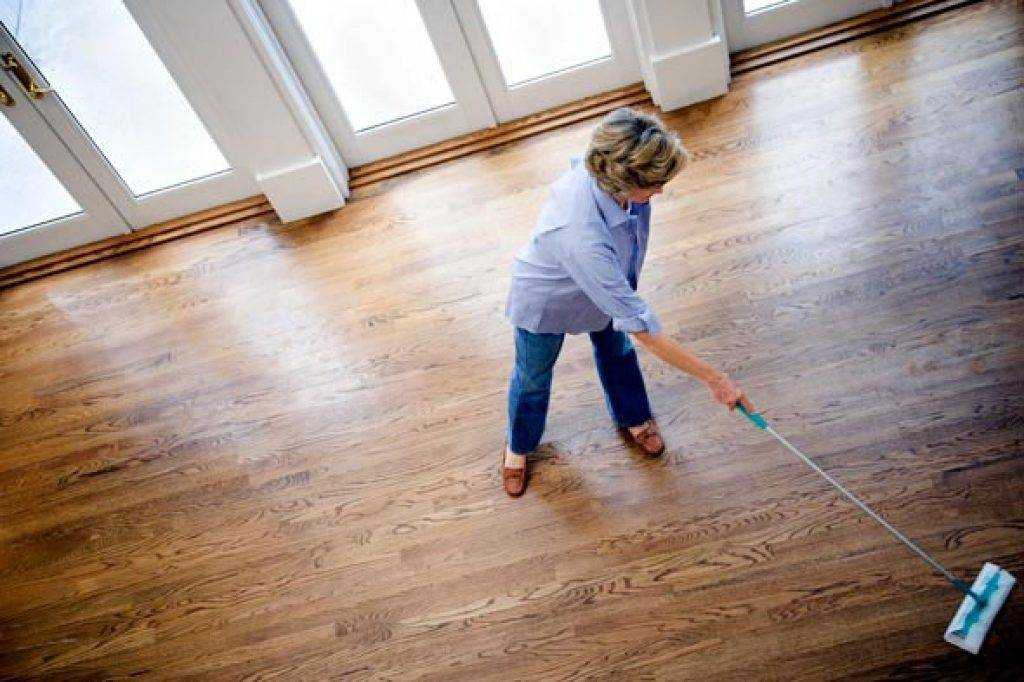
- To prevent dents, lift furniture across the waxed hardwood floors rather than dragging it.
To wax and buff, apply the wax with a rotary buffing machine. Place a small amount of wax on the floor, then buff evenly (A golf ball-sized dollop will cover about a square yard). Allow about 30 minutes to dry, then buff until a lustrous shine is apparent (It’s not complicated!). Do not to over-wax the floor. If the floor dulls, try buffing instead. Avoid wax build-up under furniture and other low-traffic areas by waxing less often in these areas. Any water, wine, spillages etc. should be cleaned immediately.
If the wax finish is discoloured by spillages which have not been cleaned up immediately or have dirt build-up, work area with wax using fine steel wool to remove grime and old wax. Wipe the floor clean, let it dry for about 30 minutes, and then buff.
How to clean hardwood floors – experts reveal the best techniques
(Image credit: Broadleaf Timber)
Knowing how to clean hardwood floors the right way will keep them in good condition.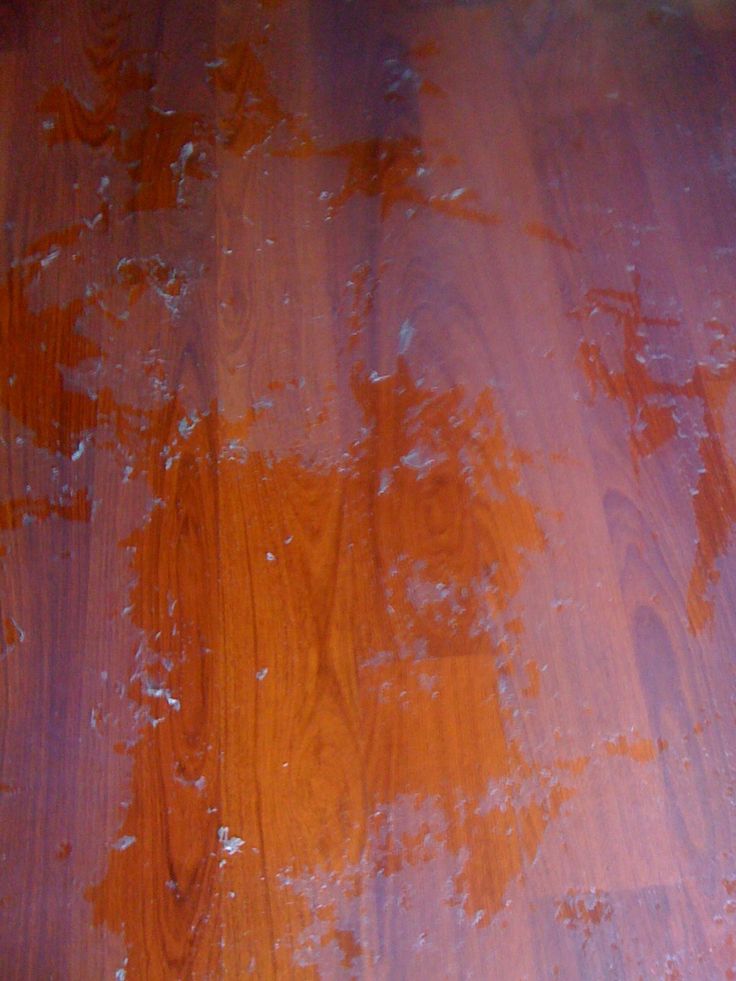 Whether you are looking to deep clean heavily stained hardwood floors, or just maintain them day to day, it’s important to use the right products and techniques.
Whether you are looking to deep clean heavily stained hardwood floors, or just maintain them day to day, it’s important to use the right products and techniques.
‘To avoid damage of your wooden floor, clean the surface regularly,’ says Richard Keen, technical advisor at wood finish specialist Osmo . ‘Any accidental spills that come into contact with the surface should be cleared up as soon as possible.’
By using the right cleaning tips and sticking to a regular regime, you will lessen the risk of stains and marks becoming ingrained, stop furniture from sliding on hardwood floors, and reduce discoloration of the wood. However, product choice is key.
‘Seek out products with a tried and tested pedigree, formulated by experts in wood care, and not just all-purpose products. Wood needs specialist TLC!’ says Mike Morris, supply chain manager and timber care technical specialist at wood care expert Liberon .
Bear in mind that it is possible to refinish hardwood floors when a new lease of life is required, and this is what you need to know about cleaning them.
How to prepare hardwood floors for cleaning
(Image credit: Darren Chung)
Before applying wet cleaning solutions, it's important to first 'dry clean' your hardwood floors.
'We recommend using a dry microfiber dusting pad and mop to pick up dust, pet hair or debris,' says Susan Stern, director of product management at hardwood floor finishes expert Bona .
'This quick step helps prepare the floor for cleaning and can prevent scratches that can occur from debris on the floor.'
How to clean hardwood floors day to day
(Image credit: Havwoods)
‘To clean hardwood floors of everyday dirt and grime, I would recommend using a water-soluble cleaning and maintenance concentrate that’s formulated for wood floors,’ says Osmo's Richard Keen. ‘This should be applied with a damp – not drenched – mop and then dried afterwards with a microfiber mop head such as Micro-Mop Plush .'
For stubborn dirt, Keen advises using the same concentrated product, but diluted a little stronger (maximum ratio 1:1).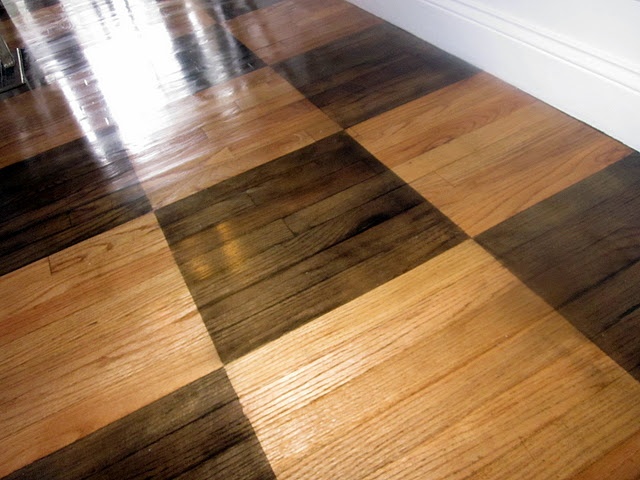
How regularly you clean your floors in this way depends on your individual household. 'A family with pets might need cleaning more regularly than a home with empty nesters,' says Stern. 'We recommend a regular quick clean – daily for most homes – with a specific focus on any high traffic areas, like entryways or kitchens.
'The cleaning sequence is key: dry dust first, then mop, then use a microfiber mop to finish.'
How to remove stains from hardwood floors
(Image credit: Colin Poole)
Any liquid sitting on a hardwood floor can potentially damage the surface. 'Remove stains as soon as possible with a cleaning solution formulated for hardwood floors, such as Bona Hardwood Floor Cleaner ,' says Stern.
Set-in stains or any warping of the floor – which can happen with liquid on the floor – might require a professional to assess the damage and offer a solution.
If there are localized stubborn stains, such as shoe scuff marks or crayon marks, Richard Keen advises to clean them using a liquid wax cleaner and a lint-free cloth. 'A product like this can also be used to occasionally to simply refresh a dull and slightly worn wooden surface that features a satin or gloss finish, but I would recommend carrying out a discreet trial first,' he says.
'A product like this can also be used to occasionally to simply refresh a dull and slightly worn wooden surface that features a satin or gloss finish, but I would recommend carrying out a discreet trial first,' he says.
Is it safe to use vinegar to clean hardwood floors?
(Image credit: Darren Chung)
Not only is it safe to use vinegar to clean hardwood floors, but it is a popular traditional method, often used on original floors in period properties.
Christine Murray, senior national conservator at the National Trust , advises staff on the care and cleaning of their properties, and says: ‘We have researched a range of techniques and natural products, which housekeepers in the past knew were effective, and which give great results.
‘To give wax-polished wooden floors a dust and buff up, we use a woolen cloth soaked in 50% vinegar and 50% liquid paraffin wrapped around a mop – this is an invaluable time-saver.’
However, Bona's Susan Stern warns that this may not be the best regular solution for many modern hardwood floors, particularly those with a polished finish. 'DIY solutions, like water and vinegar, will eventually dull and damage the floor finish,' she says.
'DIY solutions, like water and vinegar, will eventually dull and damage the floor finish,' she says.
This feature was created by H&G's sister brand, Period Living magazine
Subscribe to Period Living for more inspiration .
Period Living is the UK's best-selling period homes magazine. A subscription provides you with all you need to know about caring for and improving a traditional house and garden.
How to clean hardwood floors without streaks
(Image credit: Darren Chung)
The best way to clean hardwood floors without streaks is to consistently clean with a specially formulated solution.
'Additionally, when cleaning with a microfiber pad, it’s important to occasionally rinse the pad – making sure to wring out excess water – or swap the pad for a clean one,' says Stern. 'Many oil-based cleaning solutions can streak, as can DIY or all-purpose cleaners. Mixing cleaning solutions can also dull the finish or streak.'
Mixing cleaning solutions can also dull the finish or streak.'
How to deep clean hardwood floors
(Image credit: Natural Wood Floor Company)
‘Deep cleaning hardwood floors might feel like a bit of a daunting task, but removing wax build-up and dirt is straightforward providing you have the right product and materials,’ says Liberon's Mike Morris.
He recommends investing in a specialist timber floor cleaning product, as a general-purpose cleaning agent could strip off varnishes and alter the color of the wood.
It's important to ensure the product offers decent coverage: you should be able to expect 1 litre to cover 6-8m2 of floor area.
‘It's acceptable to use ultra-fine grade 0000 steel wool or super-fine grade 00 to apply the cleaner,’ says Morris. ‘Gently scrub the surface and then use a clean, dry cotton cloth to wipe off all the old wax.
Don't apply any water to the floor until all the steel wool dust particles have been properly cleaned up.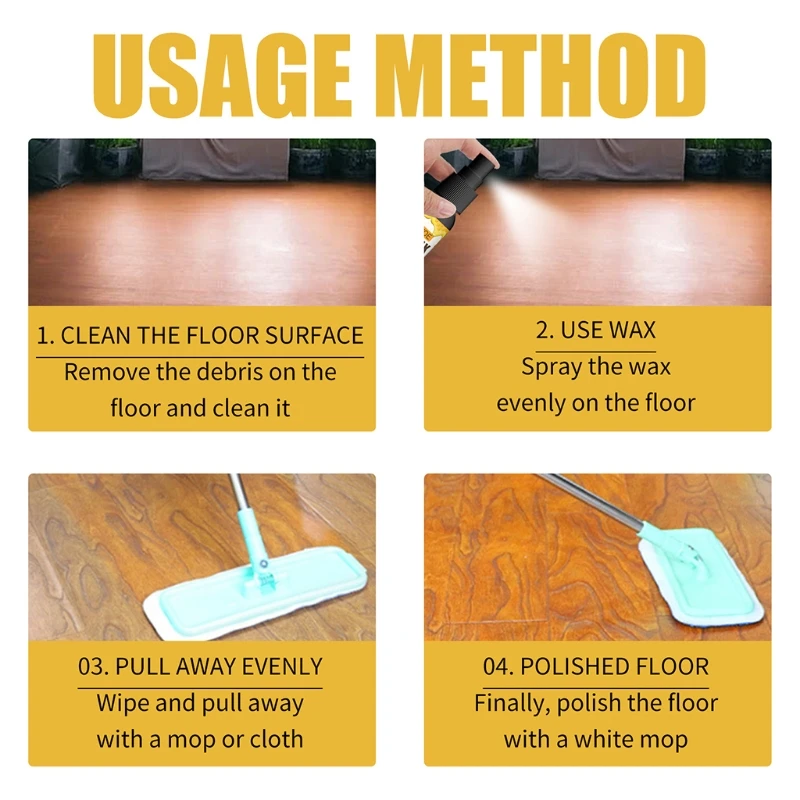 Vaccuum and use a tack cloth in nooks and crannies.
Vaccuum and use a tack cloth in nooks and crannies.
Make sure used steel wool and cloths are disposed of outside in order to reduce vapor build-up and to prevent causing a fire hazard.
On heavily waxed surfaces, you may find that the cleaning process doesn't remove all of the wax the first time, meaning a second application is needed. ‘It's then important to let the surface dry out completely before refinishing,’ adds Morris.
'Once or twice a year consider a professional deep cleaning with a certified hardwood flooring pro,' adds Bona's Stern.
How to avoid damage when cleaning hardwood floors
(Image credit: Douglas Gibb)
'The number one thing homeowners can do to avoid damage when cleaning hardwood floors is to stop using a mop and bucket!' says Stern. 'Water and wood don’t mix and a mop and bucket combination will always leave more water on the floor than necessary. '
Osmo's Richard Keen adds that you should avoid aggressive household cleaners or polishes on an oiled surface, as it can strip away the protective oils, leaving the surface unprotected and prone to wear of the fibers in the wood.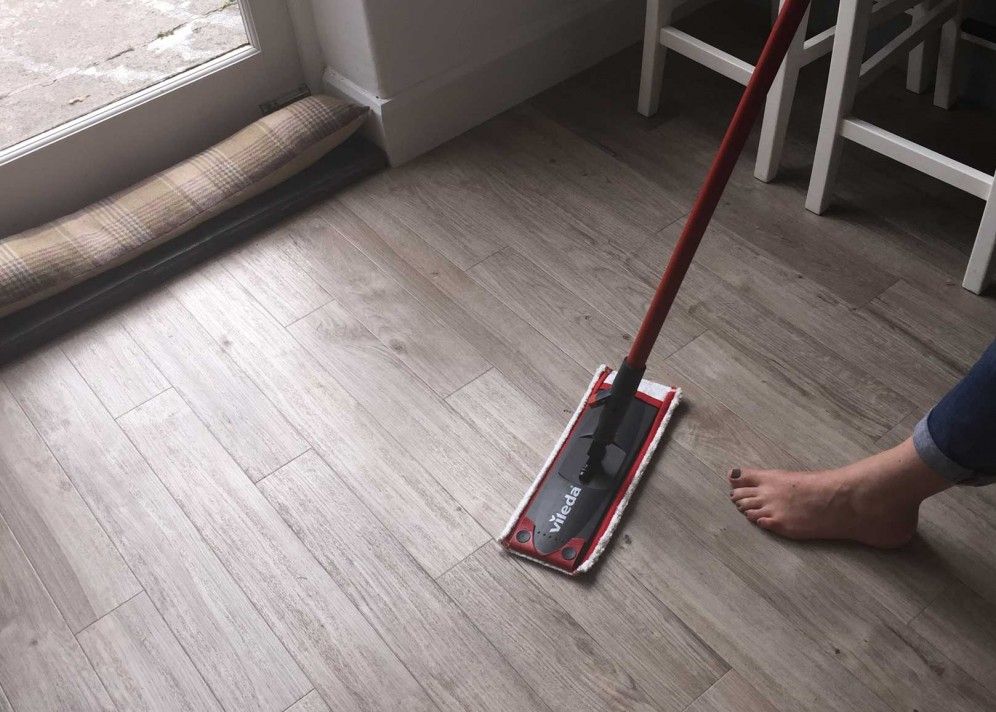 'Avoid allowing the wooden floor to become bare, as this will attract dirt,' he says.
'Avoid allowing the wooden floor to become bare, as this will attract dirt,' he says.
'When cleaning, never drag furniture across the floor, to avoid scratching it, and always fit felt pads to furniture legs to cushion the contact.'
What to do after cleaning hardwood floors
(Image credit: Jody Stewart)
Deep-cleaning hardwood floors will usually remove the wax or oiled finish, requiring a reapplication.
‘Check to see if your floor is well-sealed: if the sealer is worn or damaged then it is a good idea to use a floor sealer,’ says Liberon's Mike Morris. ‘This will enhance the color of the wood and help to protect it from stains and scratching.
'A natural, oil-based sealer, such as Liberon Floor Sealer , gives a soft satin to gloss sheen.' Ensure your chosen product is water-, heat- and alcohol-resistant.
Next, the floor is ready to be waxed, if that is your preference. 'Floor wax nourishes and beautifies wooden flooring and protects it against daily wear and tear,' says Morris.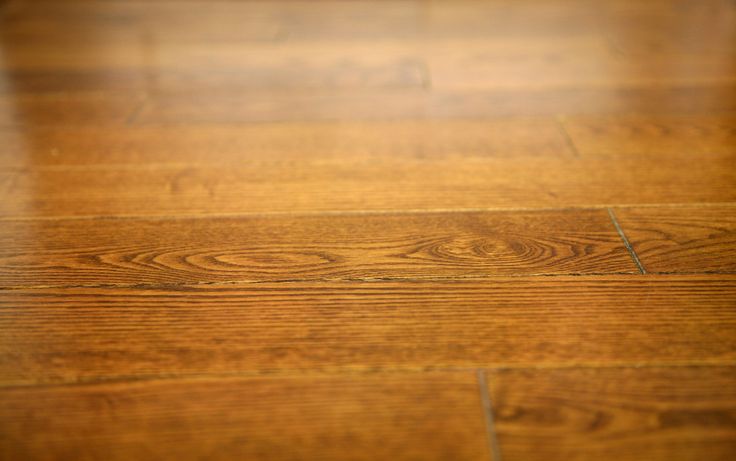 'Best results really are achieved when used over floor sealer, creating a stunning soft and natural sheen.'
'Best results really are achieved when used over floor sealer, creating a stunning soft and natural sheen.'
As editor of Period Living, Britain's best-selling period homes magazine, Melanie loves the charm of older properties. I live in a rural village just outside the Cotswolds in England, so am lucky to be surrounded by beautiful homes and countryside, where I enjoy exploring. Having worked in the industry for almost two decades, Melanie is interested in all aspects of homes and gardens. Her previous roles include working on Real Homes and Homebuilding & Renovating, and she has also contributed to Gardening Etc. She has an English degree and has also studied interior design. Melanie frequently writes for Homes & Gardens about property restoration and gardening.
Wood floor maintenance | Karcher
Wooden floors in the living room, bedroom, dining room or hallway are becoming more and more popular, not least because of their attractive appearance. However, care should be taken when cleaning: wooden floors are sensitive to water. But how to wash them without causing harm? With the right floor cleaner, you will no longer have to worry about the condition of your beautiful parquet.
But how to wash them without causing harm? With the right floor cleaner, you will no longer have to worry about the condition of your beautiful parquet.
Special characteristics of wooden floors
There are different types of wood flooring: parquet, floorboard and laminate, where parquet and floorboard are made only from wood, while laminate is made from a mixture of materials with fibreboard. Each type of flooring has its own characteristics:
Parquet
There are different types of parquet, such as strip parquet, mosaic parquet or herringbone parquet. As for the floorboard, surface treatment is important for parquet: the elements are coated with wax, oil or varnish. Wood floors can swell or shrink depending on the level of humidity. They are also susceptible to moisture. Therefore, when cleaning, it is important to ensure that as little moisture remains on the floor as possible. nine0003
nine0003
Laminate
Laminate flooring is usually made to look like wood, but there are also options with spectacular tiles or stone. It consists of a fibreboard (base layer), a decorative layer and a transparent melamine resin layer on top (overlay). The surface is scratch resistant and easy to clean, but the edges are usually sensitive to moisture, especially if the laminate is not installed correctly. nine0003
Wet cleaning with floor cleaners FC 3 Cordless and FC 5
Since wooden floors are sensitive to moisture, it is important to use as little water as possible when cleaning them. The FC 3 Cordless and FC 5 floor cleaners are ideal for gentle wet cleaning, as they leave a minimum amount of moisture behind, which dries completely in just a few minutes.
FC 3 Cordless
- Effortless wet floor cleaning
- Battery enough to clean floors up to 60 m²
- Single tank system: fresh water tank for continuous moistening of microfiber rollers
- Dirty water is removed from the rollers and collected in the tank
- Special design for cleaning under furniture and cleaning right next to it with edge - for perfect cleaning results near walls and corners
- Save up to 90 percent water compared to cleaning with a mop
FC 5 and FC 5 Cordless
- 2-in-1 cleaning system: wet cleaning with dirty water collection - all in one pass
- Corded or cordless (with battery)
- Dual tank system: FC 5 equipped with clean and dirty water tanks
- Two rotating microfiber rollers
- Automatic roller cleaning function at the parking station
- Cleaning right next to the edge thanks to the special placement of the rollers
- Up to 90 percent water savings compared to mopping
Important note
Vacuum the floor before cleaning with the FC 3 Cordless to remove large and small particles of loose dirt.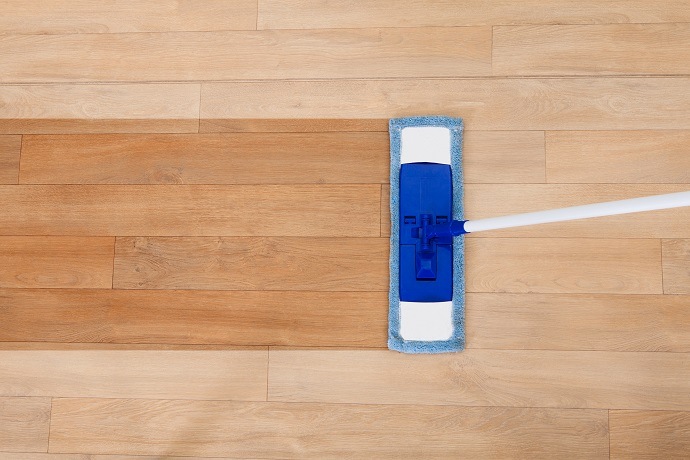 Although the FC 5 has a suction function and can suck up small particles, it cannot be used as a substitute for vacuuming.
Although the FC 5 has a suction function and can suck up small particles, it cannot be used as a substitute for vacuuming.
Cleaning wooden floors step by step
1. Before damp mopping, remove dust and large dirt particles from wooden floors with a vacuum cleaner, cordless electric broom or conventional broom. nine0003
2. Remove the water tank from the FC 3 / FC 5 and fill it with water up to the mark. Add detergent according to dosing instructions.
3. Install blank rollers on FC 3 / FC 5, paying attention to the color code on the device and rollers (blue to blue, green to green).
4. Turn on the device and start cleaning by moving the machine slowly back and forth. Note: If you are using an FC 5 machine, dampen the rollers at the station before use. nine0074
5. After cleaning, remove the dirty water tank from the device, empty it completely and rinse with clean water.
6. Remove the microfiber rollers, wash them at 60°C in a washing machine without fabric softener, and then dry them.
7. After use, fully charge the battery devices (until the LED indicator lights up permanently).
8. Position the unit at a parking station in a convenient location until next use, secure the casters. nine0003
Additional cleaning tips
- To avoid overfilling the dirty water tank, it is recommended that the fresh water tank on the FC 5 is only half full.
- Don't spend too much time cleaning one area so the floor doesn't get too wet.
- If you have an oiled or waxed wood floor, you should also avoid treating one area too long as this can remove the oil or wax from the surface of the wood. nine0028
- Delicate floor coverings such as natural cork should be tested for water tightness in an inconspicuous area.
It's all about the detergent
In order to keep your wooden floor not only clean, but also in good condition, you should use a detergent when cleaning, which, in addition to the cleaning component, contains a surface care component. The choice of equipment for a particular type of wooden floor depends on the type of surface treatment:
The choice of equipment for a particular type of wooden floor depends on the type of surface treatment:
- Wood floor with protective coating : Care product RM 534 is ideal for thorough and gentle cleaning, refreshing and maintenance of wood floors with protective coating (parquet, cork and laminate). Contains a moisture-protective component that prevents swelling of the floor covering.
- Oil/wax impregnated wood floor : RM 535 cleaner with special care agent. Leaves no streaks or streaks, gives a silky-matte shine and protects the floor from moisture. Ideal for cleaning and maintaining oiled or waxed wood floors. nine0028
The right product for every application
FC 3 Cordless
Cleans better than a mop Maximum freedom of movement thanks to battery technology.
more
FC 3 Cordless
Cleans better than a mop Maximum freedom of movement thanks to battery technology.
more
FC 5 / FC 5 Cordless
A versatile machine that cleans floors and collects dirty water in one pass. nine0003
More
FC 5 / FC 5 Cordless
A versatile machine that cleans floors and collects dirty water in one pass.
More
Shiny parquet without damage. The secret to delicate wood floor cleaning.
/ News
/ Shiny parquet without damage. What is the secret of delicate cleaning of wooden floors.
To begin with, there are different types of wooden floors: parquet, floorboard and laminate, while parquet and floorboard are made only from wood, and laminate from a mixture of materials with fibreboard. Each type of flooring has its own characteristics:
Parquet: there are different types of parquet, such as strip parquet, mosaic parquet or herringbone parquet. As for the floorboard, surface treatment is important for parquet: the elements are coated with wax, oil or varnish. Wood floors can swell or shrink depending on the level of humidity. They are also susceptible to moisture. Therefore, when cleaning, it is important to ensure that as little moisture remains on the floor as possible.
As for the floorboard, surface treatment is important for parquet: the elements are coated with wax, oil or varnish. Wood floors can swell or shrink depending on the level of humidity. They are also susceptible to moisture. Therefore, when cleaning, it is important to ensure that as little moisture remains on the floor as possible.
Laminate: laminate is usually made in a wood effect, but there are also options with spectacular tiles or stone. It consists of a fibreboard (base layer), a decorative layer and a transparent melamine resin layer on top (overlay). The surface is scratch resistant and easy to clean, but the edges are usually sensitive to moisture, especially if the laminate is not installed correctly. nine0003
How are we going to clean up?
With the right detergent and floor cleaner, you will no longer worry about the condition of your parquet. For gentle wet cleaning, Cordless series devices are ideal, Kacher presents two models: FC 3 Cordless and FC 5. Since wood floors are sensitive to moisture, it is important to use as little water as possible when cleaning them. FC 3 Cordless and FC 5 are ideal for gentle damp cleaning as they leave a minimal amount of moisture behind and dry completely in just a few minutes. nine0003
Since wood floors are sensitive to moisture, it is important to use as little water as possible when cleaning them. FC 3 Cordless and FC 5 are ideal for gentle damp cleaning as they leave a minimal amount of moisture behind and dry completely in just a few minutes. nine0003
What is the difference between the devices and what are their characteristics?
FC 3 Cordless
A traditional mop is no match for the FC 3 Cordless battery wet floor mop. Its rotating rollers are constantly wetted with clean water while washing and collecting dirt. Thanks to its ultra-slim design, the device can easily clean the floor under furniture and takes up minimal space during storage. The almost dry surface after cleaning makes it suitable for all types of hard floors, even for parquet. nine0003
FC 3 Cordless is:
• Effortless wet floor cleaning
• Battery lasts up to 60 m²
• Single tank system: fresh water tank for continuous moistening of microfiber rollers
• Dirty water is removed from the rollers and accumulates in the tank
• Special design for cleaning under furniture and cleaning right next to the edge – for perfect cleaning results near walls and corners nine0003
• Up to 90 percent water savings compared to mop cleaning
FC 5 and FC 5 Cordless
Wet with a constant stream of clean water, the roller rollers collect dust, debris and wet dirt, which are then sucked into the machine's special container.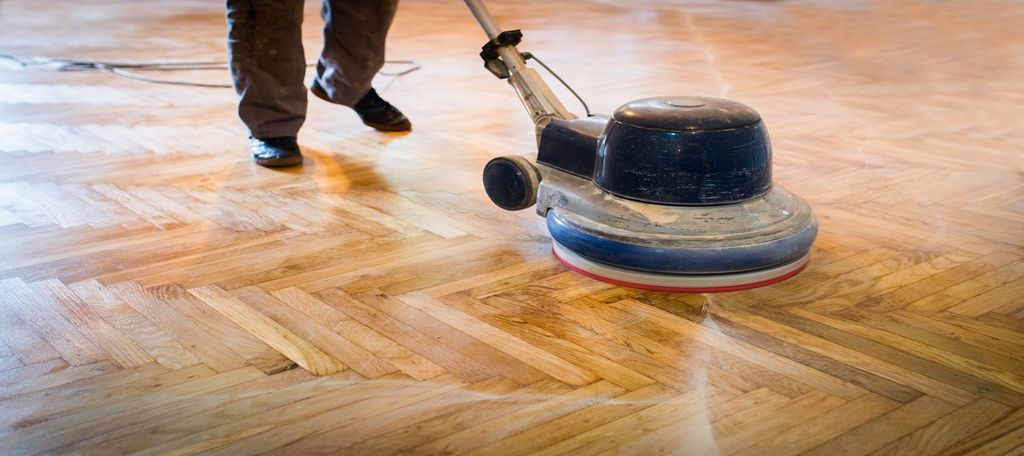 This machine is more powerful than FC 3 Cordless. As a result, we also get clean and dry floors in a minimum of time, but due to the swivel, two tanks and the possibility of suction of dirty water, this model is more popular with cleaning companies for prof. housekeeping
This machine is more powerful than FC 3 Cordless. As a result, we also get clean and dry floors in a minimum of time, but due to the swivel, two tanks and the possibility of suction of dirty water, this model is more popular with cleaning companies for prof. housekeeping
FC 5 and FC 5 Cordless are:
• 2-in-1 cleaning system: wet cleaning with dirty water collection - all in one pass
• Wired or wireless (with battery)
• Dual tank system: FC 5 is equipped with clean and dirty water tanks
• Two rotating microfiber rollers
• Automatic roller cleaning function at parking station
• Cleaning right next to the edge thanks to the special arrangement of the rollers nine0003
• Up to 90 percent water savings compared to mop cleaning
Important Note:
Appliances almost magical, but you have to vacuum the trash beforehand.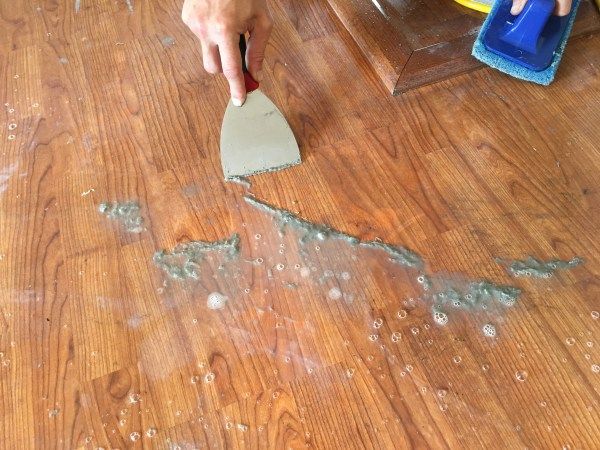 Before roller cleaning with FC 3 Cordless, the floor must be vacuumed to remove large and small particles of loose dirt from it. Although the FC 5 has a suction function and can suck up small particles, it cannot be used as a substitute for vacuuming.
Before roller cleaning with FC 3 Cordless, the floor must be vacuumed to remove large and small particles of loose dirt from it. Although the FC 5 has a suction function and can suck up small particles, it cannot be used as a substitute for vacuuming.
Additional cleaning tips:
To avoid overfilling the dirty water tank, we recommend filling the fresh water tank on the FC 5 only half way. Don't spend a lot of time cleaning one area so the floor doesn't get too wet. If you have an oiled or waxed wood floor, you should also avoid treating one area too long as this can remove the oil or wax from the surface of the wood. Delicate floor coverings, such as those made of natural cork, should be tested for water tightness in an inconspicuous area. nine0003
Did you forget your detergent?
To ensure that the wooden floor is not only clean, but also in good condition, when cleaning, use a detergent that, in addition to the cleaning component, contains a surface care component. The choice of equipment for a particular type of wooden floor depends on the type of surface treatment:
The choice of equipment for a particular type of wooden floor depends on the type of surface treatment:
• Wooden floor with protective coating: RM 534 care product is ideal for thorough and gentle cleaning, refreshing and maintaining wooden floors with a protective coating (parquet, cork and laminate). Contains a moisture-protective component that prevents swelling of the floor covering. nine0003
• Oil/wax impregnated wood floor: Cleaner RM 535 with special care agent. Leaves no streaks or streaks, gives a silky-matte shine and protects the floor from moisture. Ideal for cleaning and maintaining oiled or waxed wood floors.
You can find a line of necessary accessories for any Kärcher wet floor cleaner in the sections of our website or order individually by sending us a list in a letter. All funds will be collected and sent along with the device. suitable for any type of surface. nine0003
Which rollers are needed?
Microfibre surface rollers are used for the same function but for different applications: they are distinguished by color coding, e.